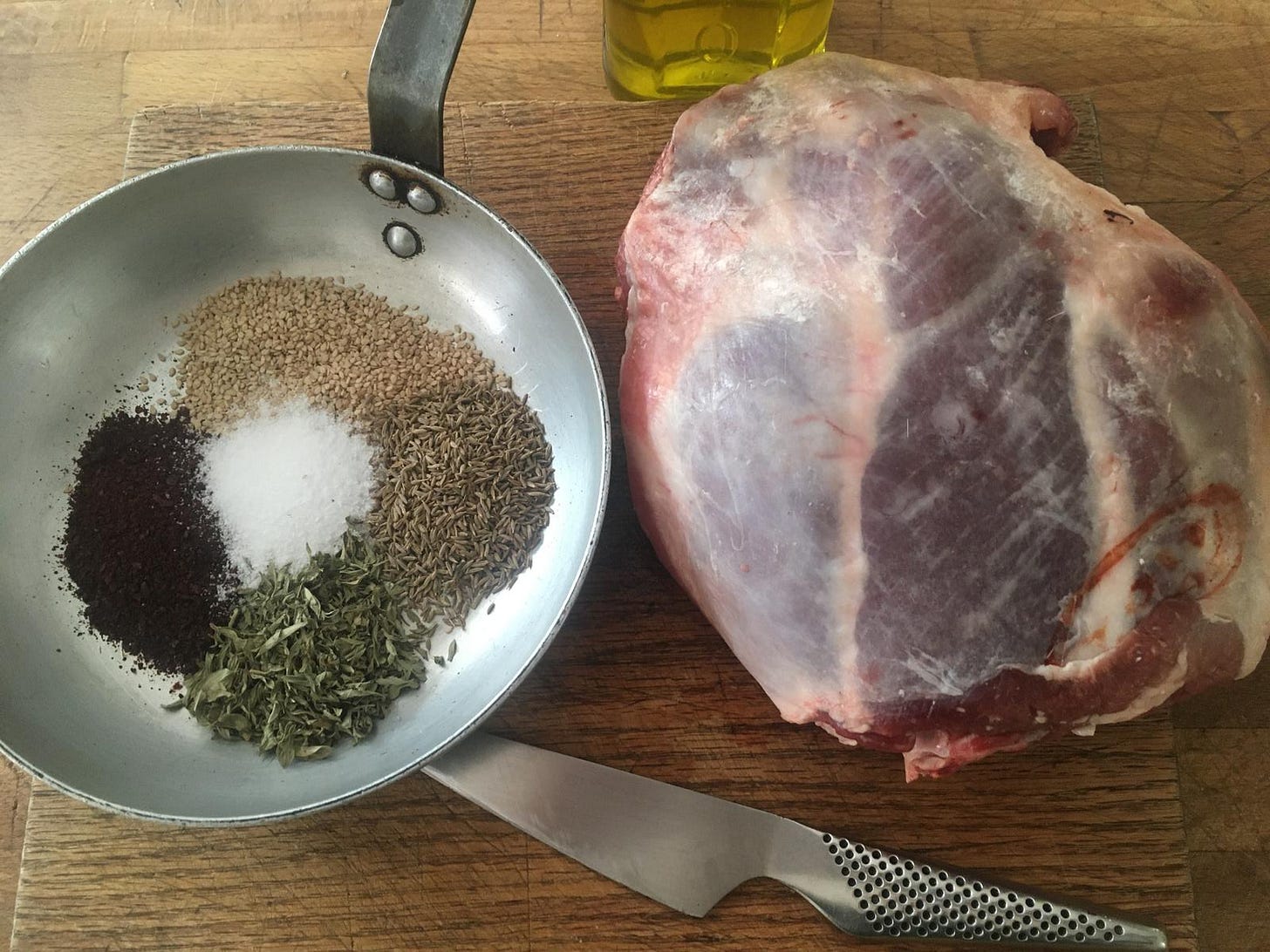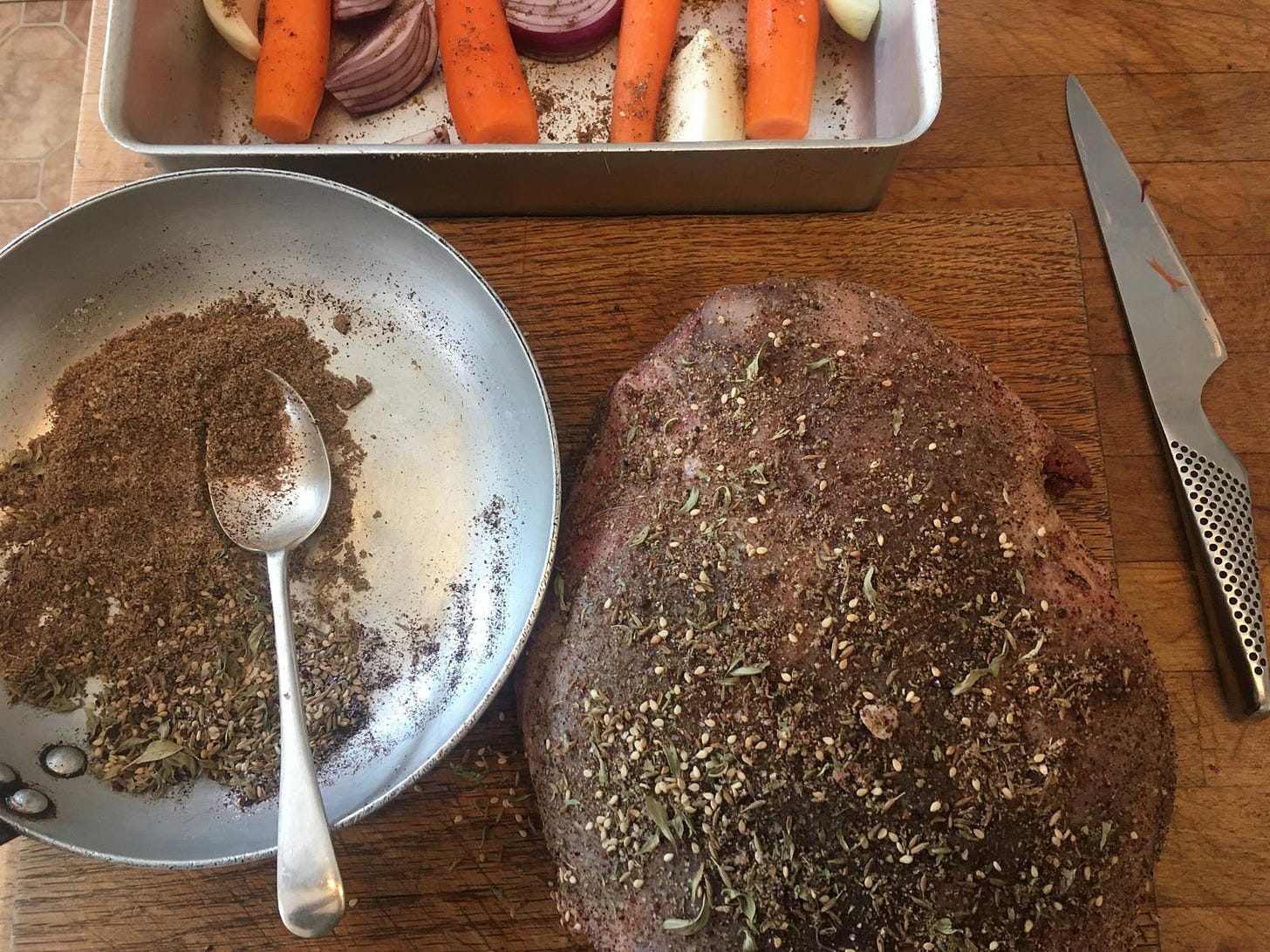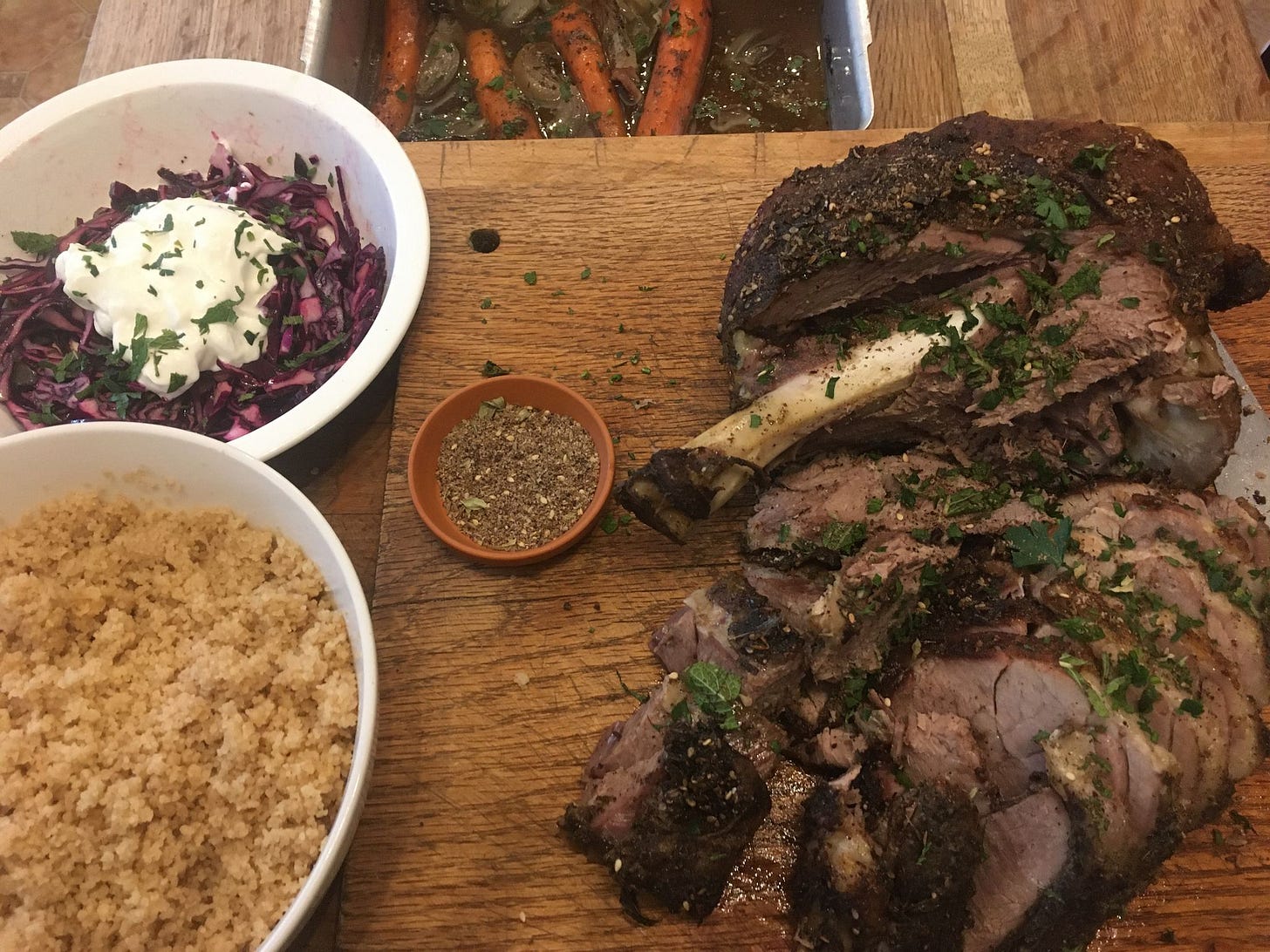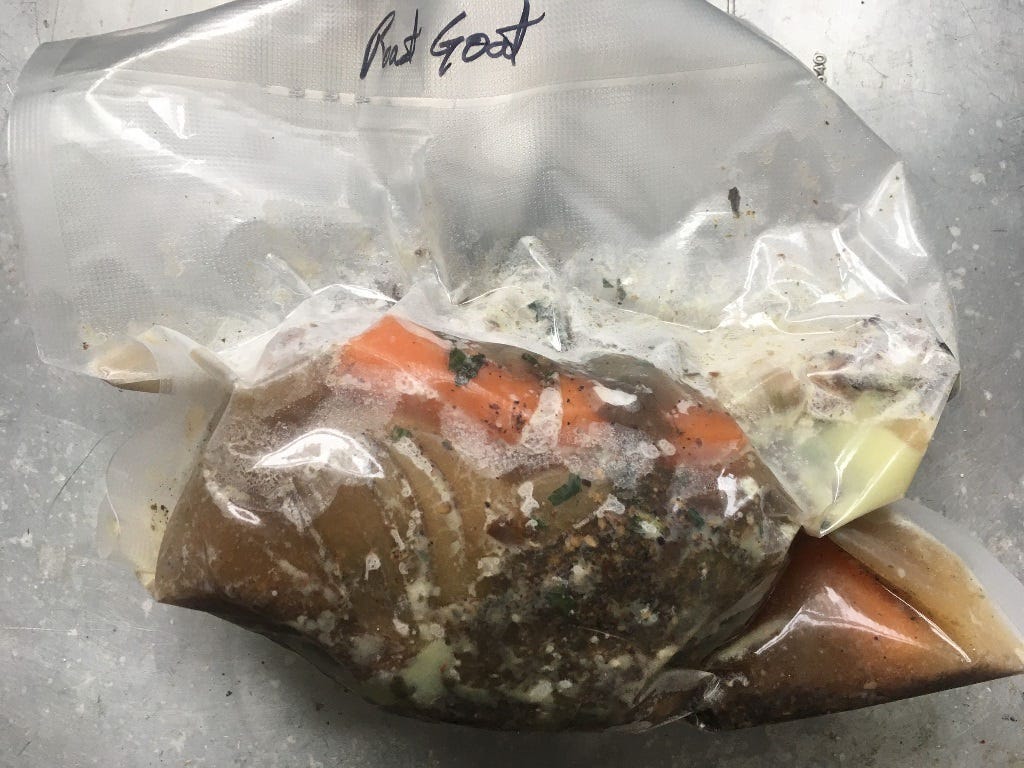Roast Goat with Za'atar
Warm spice of Levant, Roast haunch of goat encrusted, mellow scented meat
The Pang Clan love goat meat. Ever since I start cooking goat meat after my deployment to Mauritania about 12 years ago and partake at an Eid-al-Adha feast (feast of sacrifice) . Instantly, I knew the family will like the taste and texture of goat meat. I adapted the use of goat meat instead of lamb or mutton; for example, in Lancashire Hotpot and Shepard’s Pie. Then use goat in the other family favourite dishes, such as Moroccan Tagine, Meat Pilao or just simply roasted with garlic, brown butter and goat lard. Of course roast goat with Za’atar is a match made in heaven!
I get my goat meat in the form of a whole carcass from a supplier named Golden Valley Goats Ltd which sustainably
rear the goats at a farm located in the village of Madley, Herefordshire. I then butcher the carcass into specific cuts to suit my intended recipe, vac-packed and frozen for future use, typically, a whole goat is about 20-25kg in carcass weight and will do about 15-20 nutritious meals for a family of 4 adults. I also, render out the trimmed fat and use the delicious goat lard for cooking and roasting, normally yield about 350-500g.
(www.facebook.com/GoldenValleyGoats/)
Goat meat is a great source of nutrients, including protein, iron, vitamin B12, zinc, and potassium, low in total fat and saturated fat compared with other forms of red meat. Goat meat is more comparable to poultry than other red meat in its saturated fat content. We like the neutral savoury flavour of goat meat and the cooked meat maintains a moist texture even after reheating by microwave.
Za'atar is a versatile herb blend of a family of wild herbs native to the Levant, central to Middle Eastern cuisine and culture. The term refers both to aromatic plants of the Origanum and Thymbra genera and to the prepared spice mixture of dried herbs, toasted sesame seeds, sumac, and salt. With roots stretching back to ancient Egypt and classical antiquity, za'atar has been used for millennia as a seasoning, folk remedy, and cultural symbol.
There are many versions of Za’atar with the addition of one or two extra ingredients, for me, I am keeping to the base ingredient of one tablespoon of dried mountain thyme, cumin seeds, sesame seeds and sumac, with 1/2 tablespoon of kosher salt. The dried ingredients are gently toasted in a pan first, set aside to cool before being coarsely ground in a spice grinder or pestle and mortar. I normally just grind the mixture in 4 to 5 repetition of 1 second long pulses and a 5 seconds rest in between, to reduce the amount of oil being released by the sesame seeds, which will make the Za’atar clumpy. I retain about 25% of the mixture without grinding then add back at the end to give a better texture to the Za’atar. Photos showing the Za’atar ingredient and a 2.0kg haunch of goat.
First, in a baking tin, lay out 4 peeled carrots and segments of 1 red and 1 white medium onion with a small sprinkle of the salt, pepper and a pinch of Za’atar. The carrots and onions will cook to tender in the meat juice and the carrots will keep the meat from having a soggy bottom.
Generously and gently rub and cover the whole joint with Za’atar ( about 30-45g) and then place on top of the carrots, drizzle with 30ml of olive oil, the preparation is done. I normally leave the meat to get to room temperature before roasting and give a bit of time to marinade the top layer of the meat.
When ready to roast, pre-heat the oven to 160°C or 150°C fan assisted, put the goat haunch in the middle of the oven. This is a slow roast technique, the slower and lower roasting temperature allows the flavour of the spice to penetrate the meat and form a thin layer of warm aromatic and herby bark. The warm, sweet nutty smell of the roast will permeate through the house after 30-35 minutes, after 1.5 hours baste with the meat jus and return to oven, repeat the basting at 2.5 hours, the joint should be ready at about 3.5 hours, it should be tender and have plenty of tasty jus at the bottom, and carrots and onions should be nice and soft.
When the roast is ready and rested for half an hour it will give about 500 - 750ml roasting jus, which is perfect to go with couscous and a good dollop of Greek Yogurt.
Alternatively, if you prefer the meat to be on the pink side, but less roasting jus, start with pre-heating the oven to 160°C or 150°C fan assisted, then check the internal temperature after 1 hour then at every 10 minutes until the core temperature reach 65 - 70 °C, then turn the oven temperature to 70°C or 65°C fan assisted, baste the joint with roasting jus and return to oven for a further 2 hours, rest the roast at room temperature for 30 minutes.
Normally, about 50% of the roast is vac-packed and frozen for another meal, all the girls have to do is to sous vide the bag in hot water at 70°C for 45minutes to an hour the juicy roast goat will be ready.








Love it, absolutely delicious